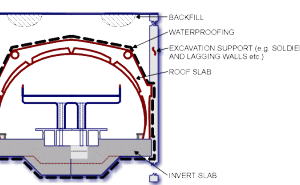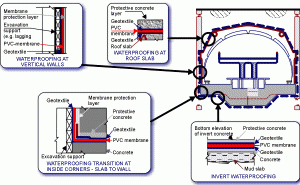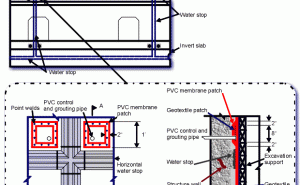You are here
Waterproofing Systems
Cut-and-cover waterproofing at the Georgia Avenue Petworth Station Washington D.C. USA.
Flexible membrane based waterproofing systems in-use since the mid-sixties for tunnels recently have been incorporated into other subterranean applications, including cut-and-cover structures.
A unique system of "sectioning" the waterproofing into panels to redirect water inflows and ease maintinence introduced has been developed. The sectioning system includes provisions for remedial work if a leak occurs. It should also be emphasized that underground structures are constantly moving strains develop due to earth loads, stress redistribution and tectonic or seismic effects. Additionally, change of moisture, temperature, etc. induces strain and stress in the structure. Therefore, cracks may develop, so a flexible waterproofing element has to be introduced which can handle strains, withstanding expansion thus bridging any cracks.
Introduction of the "sectioning system" has been developed to a standard where it can be applied not only to tunnels but to all cut-and-cover and sub-surface facilities to ensure a dry, clean and safe facility.
Compared to the application of plastic membranes in typically double lined tunnels (e.g. NATM two-pass systems) the application for cut-and-cover construction requires a higher level of design detail to account for greater installation complexity and protection of the membrane from damage during construction.


